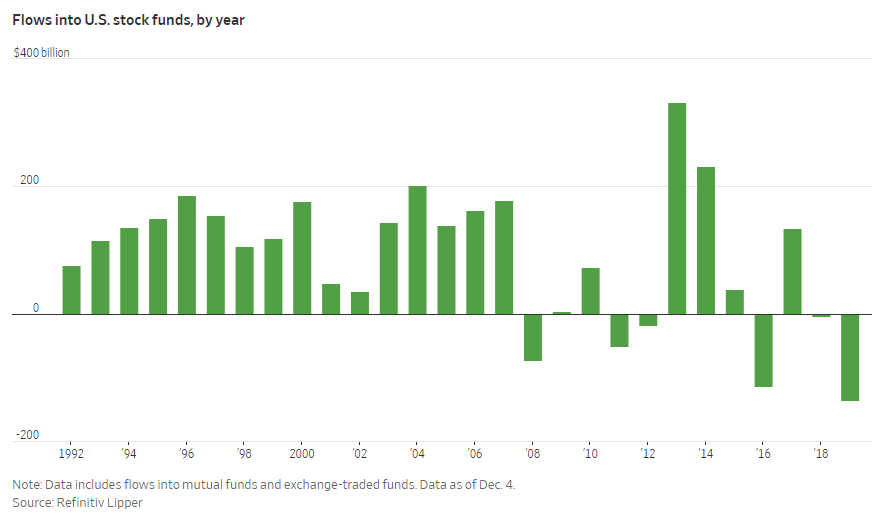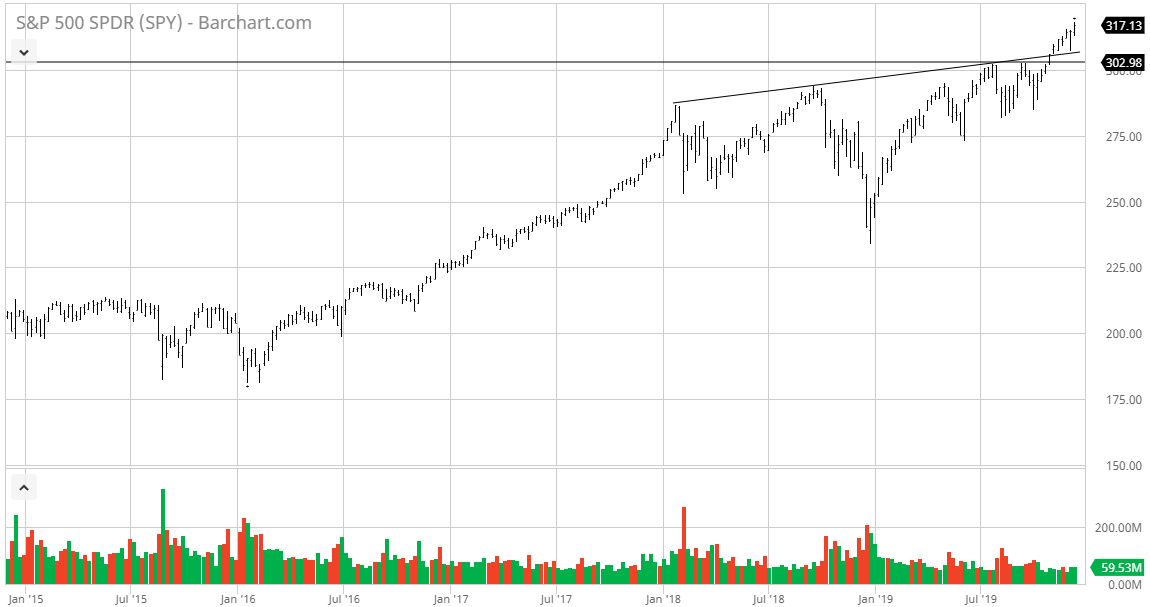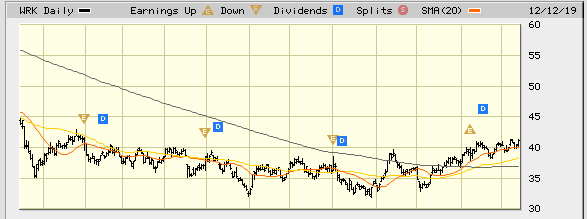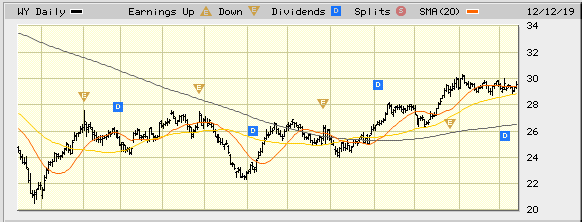Two ‘W’ Dividend Stocks Set to Vault Higher
This past month, one well-respected banking/brokerage firm after another is talking up the “great rotation” occurring within the stock market.
Evidence of money flowing from growth and defensive sectors into value and cyclical sectors is becoming more evident, so there is no doubt which stocks are showing the mojo on any given day. Since a trade deal with China apparently is close to putting the ink to the paper, the market isn’t waiting for any formalities.
Thursday’s headlines of an all-but-done deal triggered a wave of fresh buying that will surely build on itself if and when a signing ceremony is announced. And there is so much cash on the sideline, it’s a bit daunting to imagine if a war chest of $4-plus trillion in cash, money markets and bonds decides to start getting long in equities.
Talk about the tale of two markets! According to a Dec. 8 Wall Street Journal article, the S&P 500 is having its best run in six years by Main Street investors who are bailing out of stock funds at the fastest pace in decades. And based on the last time there was this dramatic of a drawdown in stocks, it is potentially a good sign for the bulls in 2020.
Per the Wall Street Journal data, investors have pulled out more than $220 billion in mutual funds and exchange-traded funds (ETFs) so far in 2019 — a record rate of withdrawal going back to 1992. That is either a giant-sized canary in the coal mine or a massive buy signal. Apparently, investors have transferred an ocean of money into bonds and money-market funds out of fear a trade war with China will ensue and incite a long-awaited recession.

The offset has been corporate buybacks, which topped $1 trillion in 2018 and are expected to approach $500 billion in 2019. The outflows in mutual funds do not take into account individual stock purchases, so there needs to be some room for adjustment in how bearish these figures appear on the surface.
Granted, if one puts up a chart of the S&P 500, the market’s benchmark index only has rallied 10.2% going back to January 2018. This year-to-date boasting of 25% gains for the S&P 500 belongs in the garbage can. The market started the year in the tank of the 2018 fourth-quarter sell-off and should be put into intelligent perspective.
That’s going on two years, which means if one bought an S&P 500 index fund back in January 2018, they are averaging about 5.1% per year. And that’s after investors endured a scare in Q4 2018 when the index trap-doored by 20% in December.

Maybe there’s something to the notion of seven stocks accounting for 30% of the stock market’s advance. If you weren’t long in Apple Inc. (NASDAQ:AAPL), Alphabet Inc. (NASDAQ:GOOGL), Amazon.com (NASDAQ:AMZN), Microsoft Inc. (NASDAQ:MSFT), Facebook Inc. (NASDAQ:FB), JPMorgan (NYSE:JPM) and Walt Disney (NYSE:DIS), you might not see any point in wearing a party hat for an annualized return of only 5.1%.
Looking at the SPDR S&P 500 ETF Trust (SPY) that represents the S&P 500 index and pays a dividend yield of 1.73%, it is technically clear the index has broken out above an ascending formation that carries with it the potential for a powerful upside move in the next three-to-six months. Imagine where the market might trade when some portion of that mountain of cash and fixed income pours into equities in January when investors are struck with the fear of missing out (FOMO).
And this upside breakout currently taking place when the trade war seems to have reached an indefinite status is sure to confound cash-rich investors that might have to contend with the new normal condition that the domestic economy can re-accelerate even in the midst of a long-term trade war with China. Few if anyone made that call earlier this year, but it’s becoming more than just perception.

Against this backdrop of the reinvigorated ex-China global economic expansion theme that is working its way through trading desks around the globe, fund managers are buying depressed deep-cyclical stocks. And they’re buying those stocks where the latest third-quarter results showed quarter-over-quarter improvement in terms of pricing, margins, revenues and earnings.
To this point, if the S&P 500 is growing at a two-year annualized rate of 5.1% and paying a 1.73% dividend yield, with the top seven stocks that make up 30% of the index arguably peaking in full valuation, where should savvy investors look to put money if the world economy is on the verge of picking up speed.
Well, let’s look at what I call the three “W” dividend stocks trade. It just so happens that three deep cyclical companies paying generous dividend yields all begin with the letter “W” and make for an interesting coincidence. They are WestRock Co. (NYSE:WRK) and Weyerhaeuser Corp. (NYSE:WY).
WestRock is one of the largest cardboard packaging makers in the world and a low-tech play on the burgeoning e-commerce world. Most everything from Amazon.com, Walmart.com, Costco.com, Nike.com and every other dot com is shipped in a cardboard container. The stock pays a dividend yield of 4.51% and is trading at $41 — well off its January 2018 high of $71.

Weyerhaeuser is one of the world’s largest owners of timberlands — roughly 12 million acres in the United States with additional licenses to manage large swaths of timberlands in Canada. Guess what the booming U.S. housing and cardboard box markets are in strong demand of — timber. The stock sports a current dividend yield of 4.64%, trades at around $29 and traded as high as $38 in early 2018.

Not only are both companies showing true technical strength, just coming out of multi-month bases and they both also gave upbeat Q3 guidance that lifted the stocks — always a good sign of professional money getting involved. Sometimes it just pays to follow the money and money is rotating into cyclical stocks.
When investors can garner a dividend that is 2.5 times more than that of the S&P 500, trading at a steep discount to its historical highs and is seeing business conditions improve, then sometimes generating attractive yield and capital gains in the market is as simple as investing in wood and cardboard.

